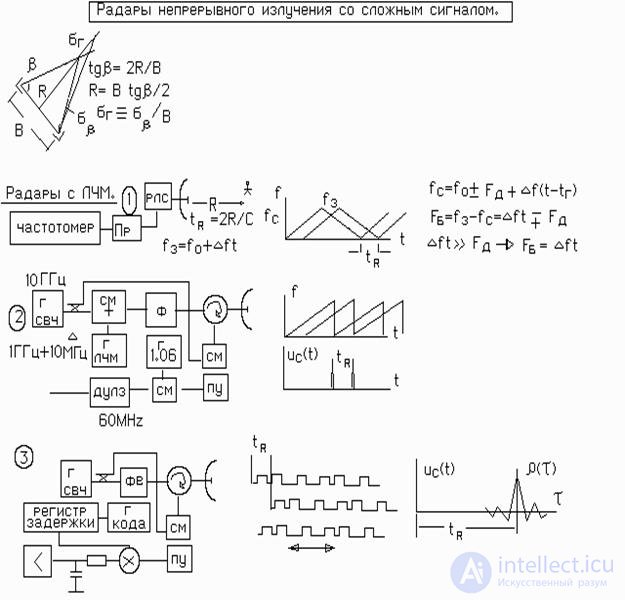
A monochrome probing signal continuous radar cannot measure the distance to a target. To measure the distance you need to have 2 radar.
But if you use a complex signal, you can solve this problem with a single radar.
Application 2 radar
To measure the distance to the target, you can use 2 radar. To do this, you need to spread them over a distance, for example, 10 m. radar with respect to the direction of the north. Next, find the direction to the target relative to the north. Knowing the distance between the radars and the direction to the target, we can solve the trigonometric problem.
Frequency Modulated Radars
To measure the range with one radar, you can proceed as follows.
To give a linear frequency modulation to the transmitter, for example, according to a sawtooth law.
Since the reflected signal from the target will be delayed, the value of the current frequencies of the probe and reflected signals will be different. The difference in frequency will be proportional to the distance to the target.
Radar with phase code modulation.
One of the promising directions is the use of modulation of the probing signal in phase (phase-code modulation FCM). It is better to do this by a pseudo-random law, for example, the Barker code or the M-sequence. The reflected signal will have the same encoding. Further, the reflected signal and the probe can be multiplied and integrated. In other words, to obtain the correlation function E If the codes coincide in time, a maximum is formed. But the signal from the target is delayed. Therefore, the correlation function will have the form of side lobes. It is possible to delay in time the modulation function of the probing signal by an amount equal to the delay time of the reflected signal and feed it to the correlator. Then the signal will be formed on the maximum of the correlation function.
Thus, by measuring the time of the artificial delay of the modulating function at the time of the maximum signal from the target at the output of the correlator, the distance can be measured.


Comments
To leave a comment
Radio Engineering Systems
Terms: Radio Engineering Systems